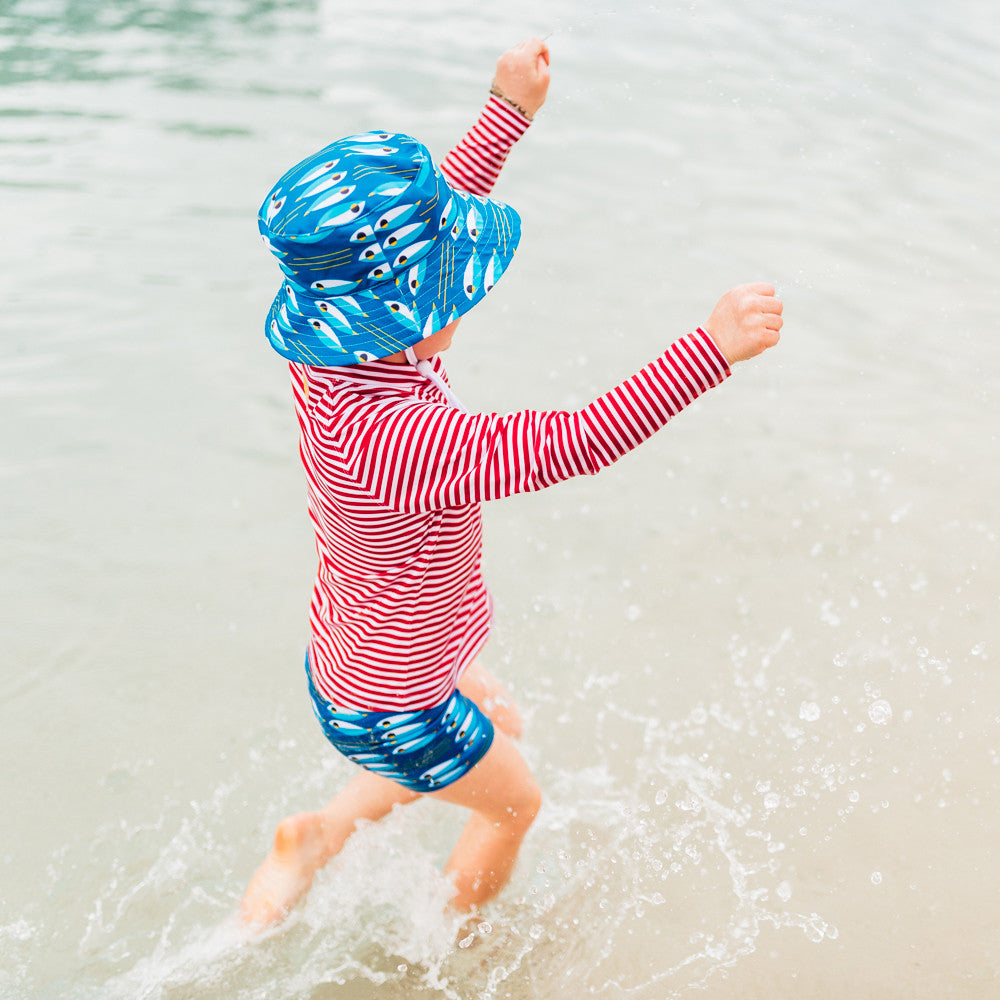
Sun Safety Myths Debunked
At Sandy Feet Australia we’re passionate about protecting children from the harmful effects of UV Radiation. So we thought with summer on our doorstep, it may be a great time for a reminder about the importance of protecting yourself in the sun this summer, and to dispel a few common myths about sun protection.
Australia has one of the highest rates of skin cancer in the world. According to Cancer Council Australia:
- Each year more than 2,000 Australians die from this almost entirely preventable disease.
- Sunburn causes 95% of melanomas.
- Many people get sunburnt when they are taking part in water sports and activities at the beach or a pool, as well gardening or having a barbeque.
- Excluding non-melanoma skin cancer, melanoma is the most common cancer in Australians aged 15-44 years.
This month Cancer Council Queensland shared some myths about sun protection, we thought were worth sharing.
Myth 1: Sun damage is not possible on windy, cloudy or cool days – false.
You can get sun damage in any weather as this is caused by ultraviolet (UV) radiation, not temperature. Sun protection is required when the UV index is three or greater – in some parts of Australia like Queensland this is all year around. Check daily UV levels at cancer.org.au/SunSmartApp.
Myth 2: Plenty of sun exposure is required to avoid vitamin D deficiency – false.
Australians shouldn’t expose themselves to potentially harmful UV in order to get more vitamin D. When UV levels are 3 or above, most Australians get enough vitamin D with just a few minutes of sun exposure while completing everyday tasks – like walking to the car or shops. During peak UV times, it’s important to reduce your risk of skin cancer by protecting your skin.
Myth 3: You can stay outside for longer when you are wearing SPF50+ than you can with SPF30+ – false. No sunscreen is a suit of armour and sunscreen should never be used to extend the amount of time you spend in the sun. SPF50+ only offers marginally better protection than SPF30+, filtering 98 per cent of UV compared to 96.7 per cent, respectively. Cancer Council recommends applying a sunscreen that is SPF30 or higher before heading outside, every two hours, after swimming, sweating, or towel drying.
Myth 4: People with olive skin are not at risk of skin cancer – false.
Regardless of skin type, exposure to UV radiation can cause skin to be permanently damaged. People with olive skin are actually more likely to detect their skin cancers at a later stage, emphasising the importance of protection, self-checks, and early detection.
Myth 5: If you tan but don’t burn, you don’t need sun protection – false.
There is no such thing as a safe tan. If skin darkens, it is a sign of skin cells in trauma, even if there is no redness or peeling. Skin darkens as a way of trying to protect itself because the UV rays are damaging cells.
Cancer Council Australia advises you protect yourself in 5 ways: Slip on sun protective clothing, Slop on SPF 30 (or higher) sunscreen, Slap on a broad-brimmed hat, Seek shade and Slide on wrap-around sunglasses. For more information please visit The Cancer Council Australia website or contact their helpline on 13 11 20.
You may also not realise that many fabrics lose their sun protection as soon as they are exposed to sun, salt, sand and chlorine. At Sandy Feet Australia we understand the importance of protecting young children’s skin from the harmful effects of UV Radiation. That’s why our unique retro-Scandinavian designs are all UPF 50+, 100% chlorine proof, quick drying, and won’t fade or stretch. Sandy Feet Australia’s unique fabric has been shown through testing conducted by ARPANSA (Australian Radiation Protection and Nuclear Safety Agency) to maintain its’ UPF50+ rating for at least 5 years. So protect your kids this summer with Sandy Feet Australia, Designed for Play and Made to Last.
